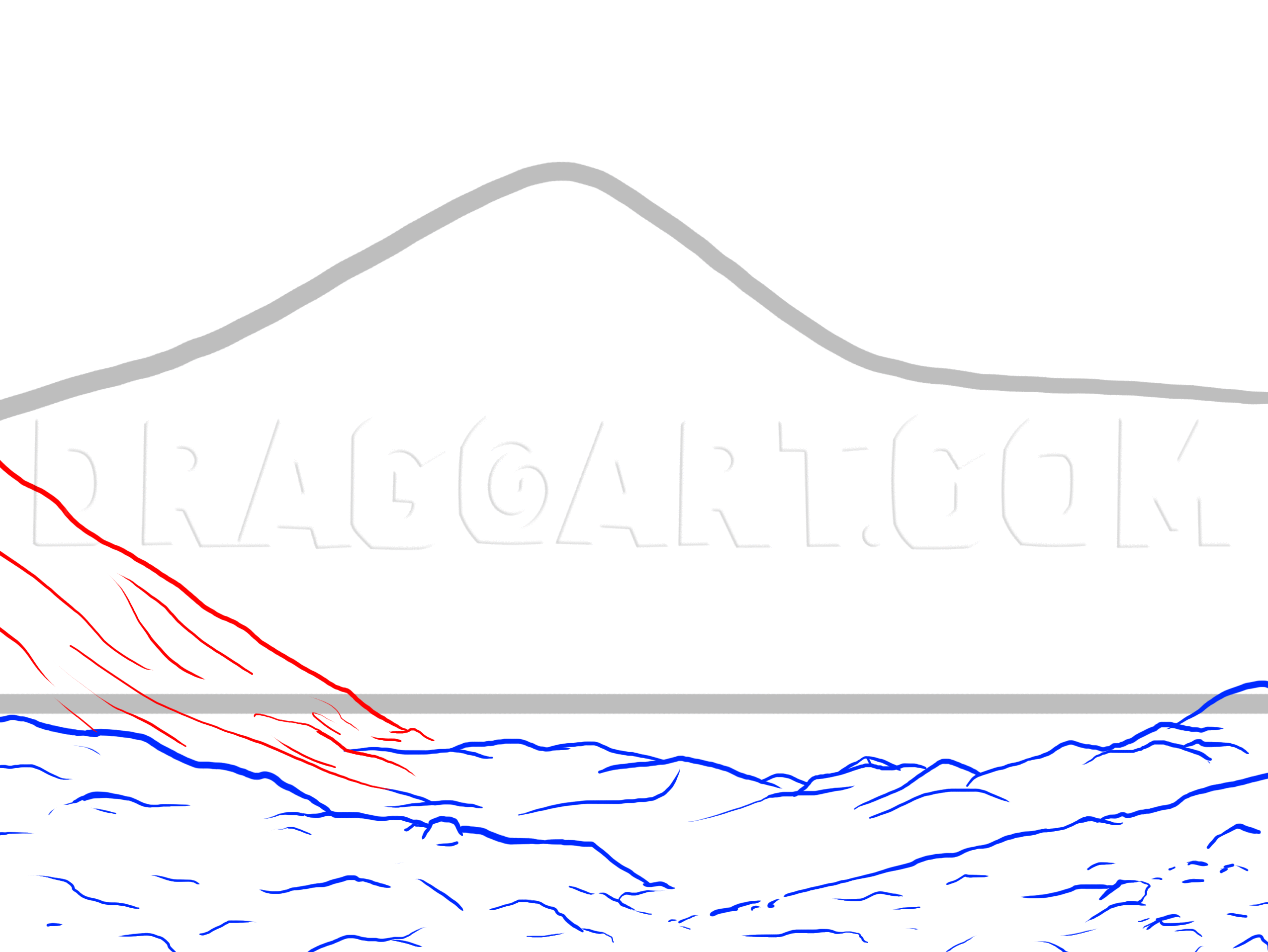1
The idea of drawing a detailed mountain such as Mount Everest may seem like a daunting task at first. But when we break it down into steps, it's really quite simple. Let's use a 2H or harder pencil to sketch in some basic guide lines. First, draw a h
2
Now that our guide lines are in place, let's draw the foreground terrain. It's best to start on the ground and work our way up to the peak of the mountain. The foreground should be rocky and free of snow. We should have two shallow slopes that slope
3
Beyond these shallow hills should be more rocky terrain with small hills scattered all over the place. Again, make sure that these hills do not rise above the horizon line. These hills should not go all the way to the left of the page.
4
Draw a high slope on the left side of the page. It should be a fairly straight diagonal line and fall onto the hills we made in step 3. Draw a few diagonal lines on the side of the slope.
5
Now that our foreground is complete, let's begin working on Mount Everest itself. The base of the mountain has a few shorter mountains smashed into its side. Draw the first mountain behind the edge of the slope we drew in step 4. It should have a sha
6
Next, draw a couple of large snow banks to the right of this small mountain. There should be a patch of rocks between the two rounded snow banks.
7
Above the snow banks should be another pointy section of mountain. This section should be especially rocky with plenty of short, vertical lines in its side. The peak should not extend past the mountain guide line we made in step 1.
8
Draw more cliffs and large rocks to the right of the snow banks. Notice how the right side of this section of mountain is cut off by a jagged line where the rock has broken away over time.
9
There should be long slopes at the base of the mountain that gradually rise up towards the snow banks.
10
We can now draw the peak of the mountain. Again, it needs to be very rocky and jagged. The peak has a sharp point in the middle of the page. It slopes down to the left where it meets a section of vertically rocks before sloping down even more as it r
11
The right side of the mountain levels off and becomes a very subtle descending diagonal line. It does need its fair share of large rocks along the top.
12
Now that the basic shape of the mountain is drawn out, go back with a well-sharpened pencil and draw cliffs and ledges and rock patterns all over the side of the mountain. Notice how the texture near the top of the peak is mostly made up of horizonta
13
It's a good idea to draw the edge of the snow line, as the snow does not go all the way to the ground. The edge of the snow should rise high on the left side of the page, and low on the right. It is not a straight or solid line, but rather a squiggly
14
Mount Everest is very high in altitude and often has clouds surrounding it. We don't want to cover up our drawing with clouds, so just draw a few small clouds floating around below the peak. This will give the viewer context as to how tall the mounta
15
It is now a good idea to ink our image. You can use either a brush and India ink, or Micron markers. Be patients and be sure not to accidentally ink any unneeded guide lines. When the ink has dried, erase your pencil marks with a kneaded eraser.
16
Let's add shadow to give the image more depth. Establish your light source, and in this case it's coming from the left side of the page. A dry brush works great for shading the side mountains. A dry brush is when you dip a brush into ink and then wip
Comments 0
Details
July 4, 2013
Description: Learn how to draw Mount Everest, the tallest mountain on planet Earth! At 29,029 feet above sea level, the mountain is part of the Himalayas and falls between the borders of China and Nepal.
















































































